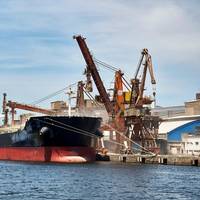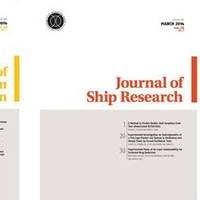Brazil Will Halt Santos Port Privatization

Brazil's government will not proceed with the privatization of the port of Santos, the largest in Latin America, the incoming minister of ports and airports was quoted as saying on Thursday by a Brazilian newspaper.Marcio Franca, tapped to head the ministry in President-elect Luiz Inacio Lula da Silva's government, told O Estado de S. Paulo's online edition that the decision had been made not to privatize the port, located just southeast of Sao Paulo and a key gateway for exports of agricultural commodities including soybeans and sugar.Franca could not be reached for comment on the decision…
SNAME Journal in Thomson Reuters Web Index

The Journal of Ship Production and Design (JSPD) published by the Society of Naval Architects and Marine Engineers (SNAME) has been accepted for coverage in the Thomson Reuters Web of Science Index of Scholarly Literature. The SNAME Journal of Ship Research has been indexed in the Web of Science for many years. The Web of Science is recognized as one of the world’s leading source of scholarly research data. The index is the only interface to include subject-specific, unbiased…
Study: Is Global Warming Worsening?
Woods Hole Oceanographic Institution (WHOI) scientists have found that carbon is stored in the soils and sediments of the Ganges-Brahmaputra basin for a surprisingly long time, making it likely that global warming could destabilize the pool of carbon there and in similar places on Earth, potentially increasing the rate of CO2 release into the atmosphere. The study, published in the current online edition of Nature Geoscience, examined the radiocarbon content of river sediments collected from the Ganges-Brahmaputra system draining the Himalayas. Using radiocarbon dating, WHOI researchers Valier Galy and Timothy Eglinton found that organic carbon resides in the basin for anywhere from 500 to 17,000 years.
WHOI: Microbes Consumed Oil in Gulf Slick at Unexpected Rates
More than a year after the largest oil spill in history, perhaps the dominant lingering question about the Deepwater Horizon spill is, “What happened to the oil?” Now, in the first published study to explain the role of microbes in breaking down the oil slick on the surface of the Gulf of Mexico, Woods Hole Oceanographic Institution (WHOI) researchers have come up with answers that represent both surprisingly good news and a head-scratching mystery. In research scheduled to be published in the Aug. 2 online edition of Environmental Research Letters, the WHOI team studied samples from the surface oil slick and surrounding Gulf waters.
WHOI Investigates Deepwater Horizon Oil Spill

Taking another major step in sleuthing the 2010 Deepwater Horizon oil spill, a research team led by the Woods Hole Oceanographic Institution (WHOI) has determined what chemicals were contained in a deep, hydrocarbon-containing plume at least 22 miles long that WHOI scientists mapped and sampled last summer in the Gulf of Mexico, a residue of the Deepwater Horizon oil spill. Moreover, they have taken a big step in explaining why some chemicals, but not others, made their way into the plume.
Partnerships of Deep-Sea Methane Scavengers Revealed
The sea floor off the coast of , , is home to a diverse assemblage of microbes that scavenge methane from cold deep-sea vents. Researchers at the California Institute of Technology have developed a technique to directly capture these cells, lending insight into the diverse symbiotic partnerships that evolved among different species in an extreme environment. The community's interconnected metabolism sheds light on how the anaerobic microbes, which consume nearly 80 percent of the methane leaked from marine sediments, limit oceanic emissions of this potent greenhouse gas. Metagenomic analysis, in which the genetic material of all microorganisms swept from their homes in a sample is sequenced wholesale, yields a plenitude of general information.





